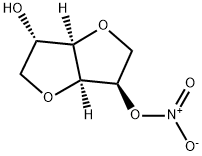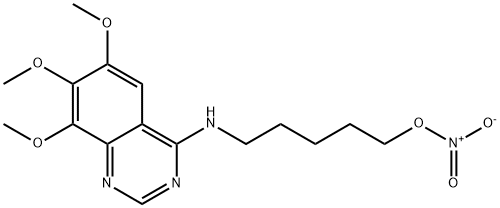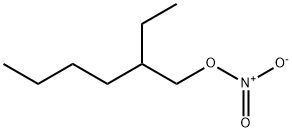Ethyl nitrate
- CAS NO.:625-58-1
- Empirical Formula: C2H5NO3
- Molecular Weight: 91.07
- MDL number: MFCD01711687
- EINECS: 210-903-3
- SAFETY DATA SHEET (SDS)
- Update Date: 2024-12-18 14:08:57

What is Ethyl nitrate?
Description
Ethyl nitrate has formula C2H5NO3. It is used in organic synthesis and as an intermediate in the preparation of some drugs, dyes, and perfumes.
Ethyl nitrate is found in the atmosphere, where it can react with other gases to form smog. Originally thought to be a pollutant, formed mainly by the combustion of fossil fuels, recent analysis of ocean water samples reveal that in places where cool water rises from the deep, the water is saturated with alkyl nitrates, likely formed by natural processes.
Chemical properties
Colorless liquid; pleasant odor; sweet taste.Soluble in alcohol and ether; insoluble in water.
Chemical properties
Ethyl nitrate is capable of explosive decomposition when exposed to heat.
The Uses of Ethyl nitrate
Organic synthesis, drugs, perfumes, dyes, rocket propellant.
Production Methods
The alkyl nitrates are produced from the corresponding alcohols by esterification with nitric acid in the presence of urea or urea nitrate.
Preparation
Ethyl nitrate has been prepared by bubbling gaseous nitryl fluoride through ethanol at ?10 °C . The reaction was subsequently studied in detail.
General Description
A clear colorless liquid with a pleasant odor. Flash point 50°F. Prolonged exposure to fire or heat may cause vigorous decomposition and rupturing of the container. Denser than water and insoluble in water. Vapors are heavier than air. Produces toxic oxides of nitrogen during combustion.
Air & Water Reactions
Highly flammable. Insoluble in water.
Reactivity Profile
Organonitrates, such as Ethyl nitrate, range from slight to strong oxidizing agents. If mixed with reducing agents, including hydrides, sulfides and nitrides, they may begin a vigorous reaction that culminates in a detonation. Nitroalkanes are milder oxidizing agents, but still react violently with reducing agents at higher temperature and pressures. Nitroalkanes react with inorganic bases to form explosive salts. The presence of metal oxides increases the thermal sensitivity of nitroalkanes. Nitroalkanes with more than one nitro group are generally explosive.
Hazard
Flammable, dangerous, fire and explosion risk.
Health Hazard
Inhalation or contact with material may irritate or burn skin and eyes. Fire may produce irritating, corrosive and/or toxic gases. Vapors may cause dizziness or suffocation. Runoff from fire control or dilution water may cause pollution.
Health Hazard
In humans ethyl nitrate can cause headache, narcosis and vomiting, but no cases of industrial intoxication have been reported .
Industrial uses
Ethyl nitrate is used in the synthesis of certain drugs, perfumes and dyes. It has also found some use as a rocket fuel.
Safety Profile
A poison by intraperitoneal route. Mutation data reported. A very dangerous fire hazard when exposed to heat or flame; can react vigorously with oxibzing materials. A moderate explosion hazard when exposed to heat (explodes @ 185'F). To fight fire, use foam, CO2, dry chemical, water to blanket fire. Incompatible with Lewis acids. When heated to decomposition it emits toxic fumes of NOx. See also NITRATES and ESTERS.
Metabolism
There is no information concerning the in vivo metabolism of ethyl nitrate, but it seems likely that one route for biotransformation is hydrolysis to yield an alcohol and nitrate. Such a pathway is common to other alkyl nitrates such as nitroglycerin and amyl nitrate.
Properties of Ethyl nitrate
| Melting point: | -94.59°C |
| Boiling point: | 87.25°C |
| Density | 1.1084 |
| refractive index | 1.3852 |
| solubility | 1.3 ml soluble in 100 ml water at 55°C; miscible with alcohol and
ether |
| Dielectric constant | 19.7(20℃) |
| EPA Substance Registry System | Ethyl nitrate (625-58-1) |
Safety information for Ethyl nitrate
Computed Descriptors for Ethyl nitrate
New Products
(S)-3-Aminobutanenitrile hydrochloride 4-Methylphenylacetic acid N-Boc-D-alaninol N-BOC-D/L-ALANINOL Tert-butyl bis(2-chloroethyl)carbamate N-octanoyl benzotriazole 3-Morpholino-1-(4-nitrophenyl)-5,6-dihydropyridin- 2(1H)-one Furan-2,5-Dicarboxylic Acid S-2-CHLORO PROPIONIC ACID ETHYL ISOCYANOACETATE 2-Bromo-1,3-Bis(Dimethylamino)Trimethinium Hexafluorophosphate 4-IODO BENZOIC ACID 3-NITRO-2-METHYL ANILINE 1-(2,4-DICHLOROPHENYL) ETHANAMINE (2-Hydroxyphenyl)acetonitrile 4-Bromopyrazole 5,6-Dimethoxyindanone 2-(Cyanocyclohexyl)acetic acid 4-methoxy-3,5-dinitropyridine 1-(4-(aminomethyl)benzyl)urea hydrochloride 2-aminopropyl benzoate hydrochloride diethyl 2-(2-((tertbutoxycarbonyl)amino) ethyl)malonate tert-butyl 4- (ureidomethyl)benzylcarbamate Ethyl-2-chloro((4-methoxyphenyl)hydrazono)acetateRelated products of tetrahydrofuran




![GLYCEROL DINITRATE, [2-14C]](https://img.chemicalbook.in/StructureFile/ChemBookStructure2/GIF/CB0356600.gif)



You may like
-
 625-58-1 Ethyl Nitrate 98%View Details
625-58-1 Ethyl Nitrate 98%View Details
625-58-1 -
 2033-24-1 98%View Details
2033-24-1 98%View Details
2033-24-1 -
 1975-50-4 98%View Details
1975-50-4 98%View Details
1975-50-4 -
 2-HYDROXY BENZYL ALCOHOL 98%View Details
2-HYDROXY BENZYL ALCOHOL 98%View Details
90-01-7 -
 2-Chloro-1,3-Bis(Dimethylamino)Trimethinium Hexafluorophosphate 221615-75-4 98%View Details
2-Chloro-1,3-Bis(Dimethylamino)Trimethinium Hexafluorophosphate 221615-75-4 98%View Details
221615-75-4 -
 61397-56-6 CIS BROMO BENZOATE 98%View Details
61397-56-6 CIS BROMO BENZOATE 98%View Details
61397-56-6 -
 14714-50-2 (2-Hydroxyphenyl)acetonitrile 98+View Details
14714-50-2 (2-Hydroxyphenyl)acetonitrile 98+View Details
14714-50-2 -
 118753-70-1 98+View Details
118753-70-1 98+View Details
118753-70-1